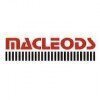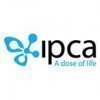Filter interviews by
DIVI'S Laboratories Interview Questions and Answers
49 Interview questions
I prioritize tasks by assessing urgency, impact, and resources, ensuring efficient project management and timely delivery.
Assess deadlines: I create a timeline for each project to identify urgent tasks. For example, if Project A is due next week and Project B is due next month, I focus on Project A first.
Evaluate impact: I prioritize tasks based on their potential impact on the project's success. For instance, com...
General ledgers are essential accounting records that categorize financial transactions into various types.
1. General Ledger: The primary accounting record that contains all financial transactions.
2. Subsidiary Ledger: Detailed accounts that support the general ledger, such as accounts receivable or payable.
3. Control Ledger: Used to summarize the balances of subsidiary ledgers, ensuring accuracy.
4. Adjusting Ledg...
General expenses are costs incurred in the normal course of business operations, not directly tied to production.
Administrative expenses: Salaries of office staff, utilities, and office supplies.
Marketing expenses: Advertising costs, promotional materials, and social media campaigns.
Rent and lease payments: Costs for office space or equipment rentals.
Insurance premiums: Payments for liability, property, and health...
Capital items can be categorized into various types based on their nature and purpose in accounting.
1. Fixed Capital: Long-term assets like buildings and machinery.
2. Working Capital: Short-term assets used for day-to-day operations, such as inventory and cash.
3. Human Capital: Skills and knowledge of employees that contribute to productivity.
4. Financial Capital: Funds available for investment in business operati...
As a Junior Chemist, I perform various laboratory operations including sample preparation, analysis, and data interpretation.
Conducting experiments to analyze chemical compounds, e.g., using chromatography.
Preparing samples for testing, such as diluting solutions or solidifying gels.
Maintaining laboratory equipment, ensuring it is calibrated and functioning properly.
Documenting results and maintaining accurate lab...
The grade of a cement cube indicates its compressive strength, measured in MPa, after 28 days of curing.
Cement grades are classified based on their compressive strength, e.g., 33 MPa, 43 MPa, and 53 MPa.
A 53-grade cement cube can withstand a compressive strength of 53 MPa after 28 days.
Higher grade cement is used for structures requiring greater strength, like high-rise buildings.
The grade is determined by testing...
Civil engineering is the discipline that designs, constructs, and maintains infrastructure projects and systems for public and private use.
Involves the design of structures like bridges, roads, and buildings.
Focuses on environmental sustainability, ensuring projects minimize ecological impact.
Includes transportation engineering, which optimizes traffic flow and safety.
Incorporates geotechnical engineering, dealing...
Cements are binding materials used in construction, with various types tailored for specific applications and environmental conditions.
Ordinary Portland Cement (OPC): Commonly used for general construction.
Portland Pozzolana Cement (PPC): Contains pozzolanic materials, enhancing durability.
Rapid Hardening Cement: Gains strength quickly, ideal for fast-track projects.
Sulphate Resisting Cement: Used in environments ...
The cube test measures the compressive strength of concrete using standardized cube samples.
Prepare concrete mix and pour into cube molds (150mm x 150mm x 150mm).
Cure the cubes in a controlled environment for 28 days.
Test the cubes using a compression testing machine.
Record the maximum load at which the cube fails.
Calculate compressive strength using the formula: Strength = Load / Area.
Cement is primarily made from limestone, clay, shells, and silica, which are heated and ground to create a fine powder.
Limestone: The main ingredient, providing calcium carbonate.
Clay: Supplies silica, alumina, and iron oxide.
Gypsum: Added to control the setting time of cement.
Fly Ash: A byproduct from coal combustion, enhances strength.
Slag: A byproduct from steel production, improves durability.
DIVI'S Laboratories Interview Experiences
84 interviews found
I applied via Recruitment Consulltant and was interviewed in Nov 2024. There was 1 interview round.
(7 Questions)
- Q1. What is civil engineering
- Ans.
Civil engineering is the discipline that designs, constructs, and maintains infrastructure projects and systems for public and private use.
Involves the design of structures like bridges, roads, and buildings.
Focuses on environmental sustainability, ensuring projects minimize ecological impact.
Includes transportation engineering, which optimizes traffic flow and safety.
Incorporates geotechnical engineering, dealing with...
- Q2. What is grade of cement cube
- Ans.
The grade of a cement cube indicates its compressive strength, measured in MPa, after 28 days of curing.
Cement grades are classified based on their compressive strength, e.g., 33 MPa, 43 MPa, and 53 MPa.
A 53-grade cement cube can withstand a compressive strength of 53 MPa after 28 days.
Higher grade cement is used for structures requiring greater strength, like high-rise buildings.
The grade is determined by testing a cu...
- Q3. Which grade of concrete cube ?
- Ans.
Concrete cube grades indicate the compressive strength of concrete, essential for structural integrity in construction.
Common grades include M20, M25, M30, etc., where 'M' stands for mix and the number indicates the compressive strength in MPa.
M20 grade concrete has a compressive strength of 20 MPa and is often used in residential buildings.
M25 grade concrete, with a strength of 25 MPa, is suitable for medium-strength ...
- Q4. What are the ingredients of cement?
- Ans.
Cement is primarily made from limestone, clay, shells, and silica, which are heated and ground to create a fine powder.
Limestone: The main ingredient, providing calcium carbonate.
Clay: Supplies silica, alumina, and iron oxide.
Gypsum: Added to control the setting time of cement.
Fly Ash: A byproduct from coal combustion, enhances strength.
Slag: A byproduct from steel production, improves durability.
- Q5. Which types of cements?
- Ans.
Cements are binding materials used in construction, with various types tailored for specific applications and environmental conditions.
Ordinary Portland Cement (OPC): Commonly used for general construction.
Portland Pozzolana Cement (PPC): Contains pozzolanic materials, enhancing durability.
Rapid Hardening Cement: Gains strength quickly, ideal for fast-track projects.
Sulphate Resisting Cement: Used in environments with ...
- Q6. What are the types of cement?
- Ans.
Cement types vary based on composition and use, influencing strength, setting time, and durability in construction.
Ordinary Portland Cement (OPC) - Commonly used for general construction.
Portland Pozzolana Cement (PPC) - Contains pozzolanic materials, enhancing durability.
Rapid Hardening Cement - Gains strength quickly, ideal for fast-track projects.
Low Heat Cement - Reduces heat generation during curing, suitable for ...
- Q7. Process of cube test ?
- Ans.
The cube test measures the compressive strength of concrete using standardized cube samples.
Prepare concrete mix and pour into cube molds (150mm x 150mm x 150mm).
Cure the cubes in a controlled environment for 28 days.
Test the cubes using a compression testing machine.
Record the maximum load at which the cube fails.
Calculate compressive strength using the formula: Strength = Load / Area.
Interview Preparation Tips
I appeared for an interview in Apr 2025, where I was asked the following questions.
- Q1. How much of anesthesia given to a patient
- Q2. Describe a few words about your project work
- Q3. What are antibiotics
Interview Preparation Tips
I appeared for an interview in Feb 2025.
(1 Question)
- Q1. Basic engineering questions
- Q1. Introducing your self
- Ans.
My self v. Srilalitha I have 21 years old I have pursuing bachelor degree b. Pharmacy hindu college of pharmacy
- Q2. Qa and ac
- Q3. What is formulations
- Ans.
Formulation refers to the process of creaming a mixture of ingredients to produce a specific product with desired characteristics property and performance
- Q4. Clinichal triles types
- Ans.
Phase 1: first human trails, small number of primary goal Phase2: efficacy and safety, large number Phase3: post marketing larger number
- Q5. Pharmacokintices
Interview Preparation Tips
I appeared for an interview in Mar 2025, where I was asked the following questions.
- Q1. Tell me your about
- Q2. Basic knowledge
- Q3. Degree syllabus
I appeared for an interview in Mar 2025, where I was asked the following questions.
- Q1. What is your name
- Q2. What is your aim in life
Interview Preparation Tips
I applied via Campus Placement and was interviewed in Apr 2024. There were 3 interview rounds.
(5 Questions)
- Q1. 1.Tell me about your self. 2.where are you from. 3.which famous. 4. Graduation.
- Q2. 1.what is bulk drug. 2. How to formulation of bulk drugs. 3. What is disintegration. 4. What is sterilization
- Q3. 1.what is chromatographic techniques. 2. HPLC and TLC. 3.Affinity chromatography. 4. Auto clave. 5. What is table, compression types.
- Ans.
Chromatographic techniques are used to separate and analyze mixtures of chemicals based on their properties.
Chromatographic techniques involve passing a mixture through a stationary phase, where different components move at different rates.
HPLC (High Performance Liquid Chromatography) is a technique used to separate compounds in a liquid mixture.
TLC (Thin Layer Chromatography) is a technique where compounds are separat...
- Q4. 1. What is bulk drugs. 2. Explaining process of bulk formulations. 3. Uses of active ingredients. 4. Types of compressions.
- Q5. 1. Chromatographic techniques 2. HPLC and TLC 3. Definition affinity chromatography. 4.physical and chemical characteristics of drug. 5. Uses of tablets. 6.how to prepare tablets.
(1 Question)
- Q1. 1.what is bulk drug. 2.how can formulation of tablet. 3. Explaining process of bulk drug. 4.what is active ingredient. 5. Uses of Soxlet apparatus.
(1 Question)
- Q1. No question can ask me.
Interview Preparation Tips
I appeared for an interview in Dec 2024, where I was asked the following questions.
- Q1. Why are add interview questions
- Ans.
Working how do you will performance working as experience also
- Q2. Working as an analyst role
- Q3. Asking you analysis performed
- Q4. Any section realated questions
- Q5. I am also working
- Q6. Day to day implementation
- Ans.
Day-to-day implementation involves executing strategies, monitoring progress, and adjusting plans to achieve objectives effectively.
Set clear daily goals to align with overall project objectives.
Monitor key performance indicators (KPIs) to assess progress.
Conduct regular team meetings to discuss challenges and solutions.
Utilize project management tools like Trello or Asana for task tracking.
Adjust strategies based on f...
- Q7. How many questions asking
- Ans.
Your choice so how do you performing in interview questions
- Q8. I will submitted
- Q9. So also working realated questions
- Ans.
Am also working as an analyst I will performing analysis
Description the study of life
Interview Preparation Tips
I applied via Campus Placement and was interviewed in Jun 2024. There was 1 interview round.
(2 Questions)
- Q1. What is your project
- Ans.
I led a project to optimize production processes, reducing waste and improving efficiency in our manufacturing line.
Conducted a thorough analysis of current production workflows to identify bottlenecks.
Implemented lean manufacturing techniques, such as 5S and Kaizen, to streamline operations.
Collaborated with cross-functional teams to ensure alignment on project goals and timelines.
Utilized data analytics to monitor pr...
- Q2. What is molarity
- Ans.
Molarity is a measure of concentration, defined as moles of solute per liter of solution.
Molarity (M) = moles of solute / liters of solution.
Example: 1 M solution of NaCl contains 1 mole of NaCl in 1 liter of water.
Used in chemistry to prepare solutions with precise concentrations.
Molarity changes with temperature due to volume expansion or contraction.
Interview Preparation Tips
Top trending discussions






DIVI'S Laboratories Interview FAQs
The duration of DIVI'S Laboratories interview process can vary, but typically it takes about less than 2 weeks to complete.
Tell us how to improve this page.
DIVI'S Laboratories Interviews By Designations
- DIVI'S Laboratories Production Supervisor Interview Questions
- DIVI'S Laboratories Supervisor Interview Questions
- DIVI'S Laboratories Production Chemist Interview Questions
- DIVI'S Laboratories Chemist Interview Questions
- DIVI'S Laboratories Quality Analyst Interview Questions
- DIVI'S Laboratories Production Interview Questions
- DIVI'S Laboratories Accountant Interview Questions
- DIVI'S Laboratories Analyst Interview Questions
- Show more
Interview Questions for Popular Designations
Overall Interview Experience Rating
based on 90 interview experiences
Difficulty level
Duration
Interview Questions from Similar Companies
DIVI'S Laboratories Reviews and Ratings
based on 1.5k reviews
Rating in categories
|
Chemist
803
salaries
| ₹1.8 L/yr - ₹6 L/yr |
|
Production Chemist
556
salaries
| ₹1.8 L/yr - ₹5.7 L/yr |
|
Supervisor
550
salaries
| ₹1.9 L/yr - ₹6 L/yr |
|
Analyst
383
salaries
| ₹2 L/yr - ₹5.2 L/yr |
|
Production Supervisor
358
salaries
| ₹1.9 L/yr - ₹6 L/yr |

Cipla

Dr. Reddy's

Lupin

Zydus Lifesciences
- Home >
- Interviews >
- DIVI'S Laboratories Interview Questions













